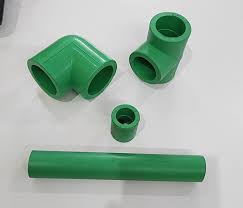Nov . 08, 2024 12:33 Back to list
HDPE Pipe Size Specifications and Manufacturing Industry Overview
Understanding HDPE Pipe Diameters and Their Importance in Manufacturing
High-Density Polyethylene (HDPE) pipes have become a staple in various industries due to their durability, flexibility, and resistance to corrosion. The manufacturing of HDPE pipes involves a range of diameters, which are crucial for different applications, from water supply systems to gas distribution. This article explores the significance of HDPE pipe diameters and the factories that produce them.
The Role of HDPE Pipes
HDPE pipes are commonly used for transporting fluids and gases in a wide range of applications. Their ability to withstand high pressures and resist environmental stress makes them ideal for use in irrigation, sewer systems, drainage, and even in the construction of natural gas pipelines. As industries evolve and the demands for efficient resource management grow, the significance of HDPE pipes has only increased.
One of the critical factors in the selection of HDPE pipes is the diameter. The diameter affects not only the flow rate of the material being transported but also the overall efficiency of the system. Larger diameters typically allow for higher flow rates, while smaller diameters may be more suitable for lower flow requirements. Additionally, the specific dimensions of the pipes, including their wall thickness, play a role in their structural integrity and resistance to external factors.
Standard Diameters and Specifications
HDPE pipes come in various standard diameters, typically measured in millimeters (mm) or inches. The most common sizes range from small diameters of 20mm (approximately ¾ inch) to larger diameters exceeding 1,200mm (about 48 inches). The chosen diameter for a project is often dictated by engineering specifications, local regulations, and the intended purpose of the pipe.
Manufacturers often adhere to international standards, such as ASTM, ISO, or DIN, which dictate specific requirements for the manufacturing of HDPE pipes. These standards ensure that pipes meet safety and performance requirements suitable for their applications. For instance, larger diameters may be required for municipal water main installations, while smaller diameters may suffice for residential purposes.
hdpe pipe diameters factories

The Manufacturing Process
The production of HDPE pipes involves several steps, starting from the extrusion of polyethylene pellets to the final testing of the pipes. Factories employ advanced technology to ensure precision in creating pipes with the correct diameters. The extrusion process is particularly crucial, as it determines the pipe's uniformity, strength, and flexibility.
After extrusion, quality control measures are implemented to test each batch of pipes for defects and compliance with specified standards. Factors such as pressure capacity, resistance to temperature, and chemical stability are thoroughly examined to ensure that the pipes will perform effectively in their intended environments.
Choosing the Right Factory
Selecting the right factory for HDPE pipe production is vital for any business or project manager. Factors to consider include the factory's reputation, quality assurance processes, certifications, and the range of diameters offered. A reliable manufacturer should be able to provide a comprehensive inventory of pipe sizes to meet diverse project requirements.
Furthermore, it is advisable to work with manufacturers who have experience in producing custom sizes or specialty pipes for unique applications. Collaborating with a factory that understands the specific demands of your industry will help ensure that the pipes delivered align perfectly with your project needs.
Conclusion
In conclusion, HDPE pipes and their diameters play a crucial role in modern infrastructure and resource management. As industries continue to seek reliable and durable solutions, the importance of understanding pipe specifications and selecting the right manufacturing partner cannot be overstated. By paying close attention to the sizing and quality of HDPE pipes, businesses can significantly enhance their operational efficiency and sustainability.
-
High-Quality PVC Borehole Pipes Durable & Versatile Pipe Solutions
NewsJul.08,2025
-
High-Quality PVC Perforated Pipes for Efficient Drainage Leading Manufacturers & Factories
NewsJul.08,2025
-
High-Quality PVC Borehole Pipes Durable Pipe Solutions by Leading Manufacturer
NewsJul.08,2025
-
High-Quality PVC Borehole Pipes Reliable PVC Pipe Manufacturer Solutions
NewsJul.07,2025
-
High-Quality UPVC Drain Pipes Durable HDPE & Drain Pipe Solutions
NewsJul.07,2025
-
High-Quality Conduit Pipes & HDPE Conduit Fittings Manufacturer Reliable Factory Supply
NewsJul.06,2025

